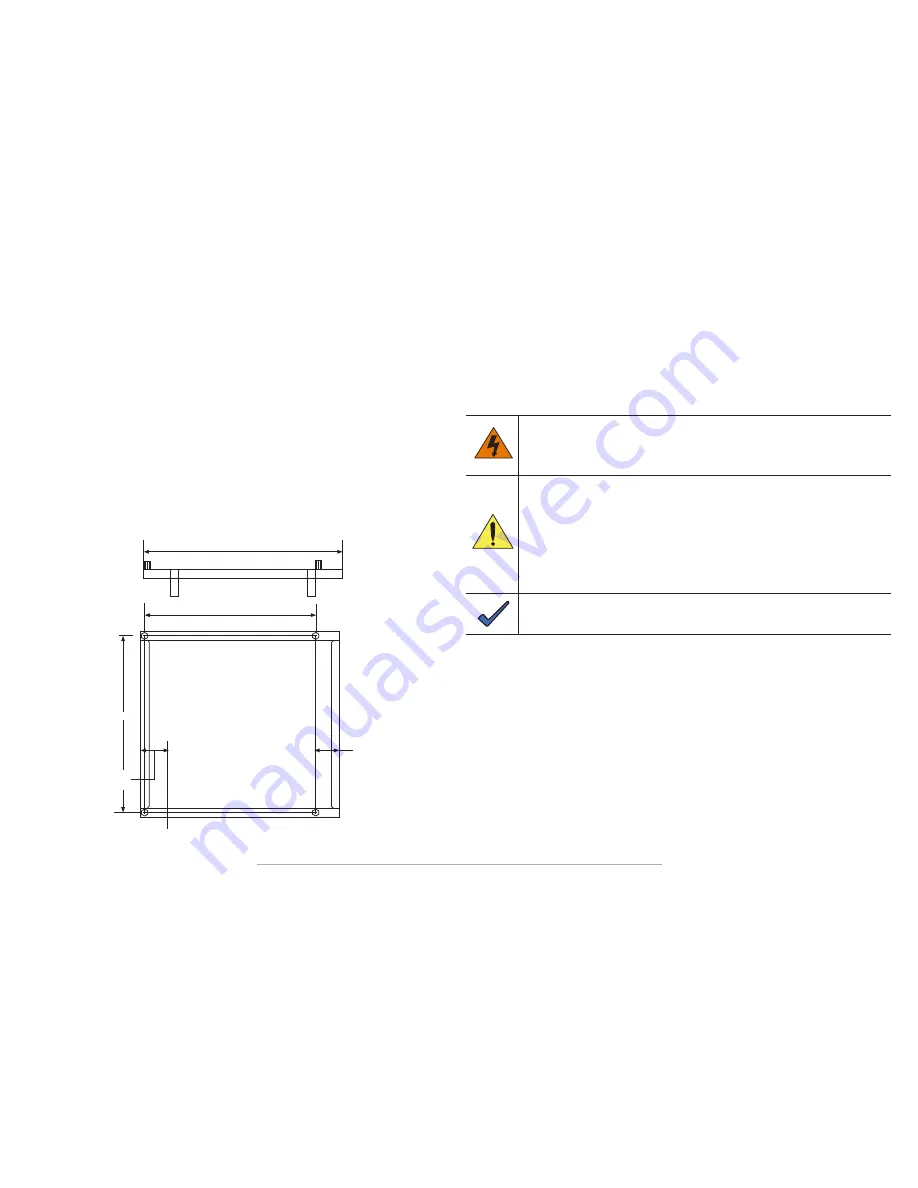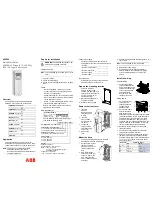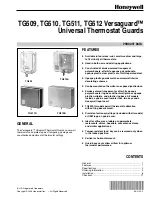
OutBack reserves the right to make changes to the products and information contained in this document without notice.
Copyright © 2015 OutBack Power. All Rights Reserved. OutBack
is a registered trademark of The Alpha Group. p/n 044-026-B0-001, Rev. A (03/2015)
Transportation and Lifting
A safe means of transportation to the site and a safe procedure for unloading the enclosure is necessary. At
least two installation personnel are required to place the enclosure on the pad. Installation team must assess
the transport path for all obstructions. An obstruction free path should be selected for transport. Use safe lifting
practices. Electronic modules, batteries or other components must not be installed until the enclosure is securely
set in place at its permanent location.
CAUTION: Personal Injury
•
Never transport the enclosure with batteries installed. Batteries must ONLY be installed after
the enclosure is transported to the site and secured to the pad. Transporting the enclosure
with batteries installed may cause a short circuit, fire, explosion, and/or damage to the
battery pack, enclosure and installed equipment. Damage caused by improper shipping or
transporting an enclosure with batteries installed is not covered by the warranty.
•
Enclosure must always remain in the upright position during the shipping, storage and
installation process. Damage may result from enclosure being shipped or stored on its side.
•
DO NOT lift the enclosure by the solar shield.
1. Unbolt the enclosure from the pallet. The bolts fastening the enclosure to the pallet are located in the riser
beneath the enclosure. They can be reached through the front and rear access panels.
2. Position the 25-year vapor barrier material over the concrete pad, and make all necessary cutouts (See Figure
5).
3. Attach the lifting chain to the lifting ears located in the top of the enclosure. Verify the adjustable chain links
are tightened securely. Also verify the length of the cable between the lifting ears and the lifting hook is at
least twice the distance between the lifting ears, and that the lifting angle of the chain is greater than or equal
to 60 degrees.
4. Lift the enclosure off of the truck using a winch capable of supporting approximately 500 lb. (227 kg).
5. Verify all cabling passing through the enclosure is bundled and maintained within the cutout area.
6. Position the enclosure above the concrete pad and slowly lower it into position over the pad's 1/2" (1.3 cm)
anchor or J-bolts. A 25+ year vapor barrier MUST be used between the concrete and enclosure base to inhibit
moisture ingress and corrosion caused by metal-to-concrete contact. The vapor barrier material (such as 30 lb.
felt, neoprene pond liner, or heavy grade tar paper) should initially extend at least 6" (15 cm) in all directions
around the perimeter of the enclosure. After the enclosure is in place, the material should be trimmed close to
the enclosure, using the appropriate knife or cutting tool.
WARNING: Personal Injury
•
Do not allow personnel to walk beneath the suspended unit during the lifting operation.
•
Use safety toe work shoe protection.
•
Use “hard hats” at all times during this procedure.
NOTE: Additional Equipment Information
•
Remove the lifting ears after installation. The ears are made of steel and may rust over time.
Figure 4, OBE-3-FT Layout for Pour-in-Place Concrete
(P/N 604-039-N1)
Pour-In-Place Concrete Pad Installation
The illustrations below show the overall size of the pad frame template for a single OBE-3-FT enclosure. The actual
outer dimensions of the pad will be determined by the customer’s requirements. When placing the pad, allow at
least 36 inches of clearance for the front and rear doors.
Installation Instructions:
1. Consult local codes for concrete pad requirements.
2. The OBE-3-FT enclosure must be bolted down to a completely flat surface. If the concrete pad is uneven
or has bumps, cracks, or other imperfections, the installer is responsible for correcting these defects prior
to installing the enclosure. Outback is not responsible for damage to the enclosure caused by improper
installation.
3. Proper soil compaction is required to prevent settling of the pad.
4. Additional pad clearance may be desirable to reduce debris build-up around the enclosure.
5. Steel reinforcement bars or mesh may be used to reduce cracking and resettling due to changes in humidity
and temperature.
29.25" (74.3 cm)
25" (63.5 cm)
25.82" (65.6 cm)
4.0" (10.2 cm)
(2 places)
4.0" (10.2 cm)
(2 places)
Front
Front
Rear
Rear























